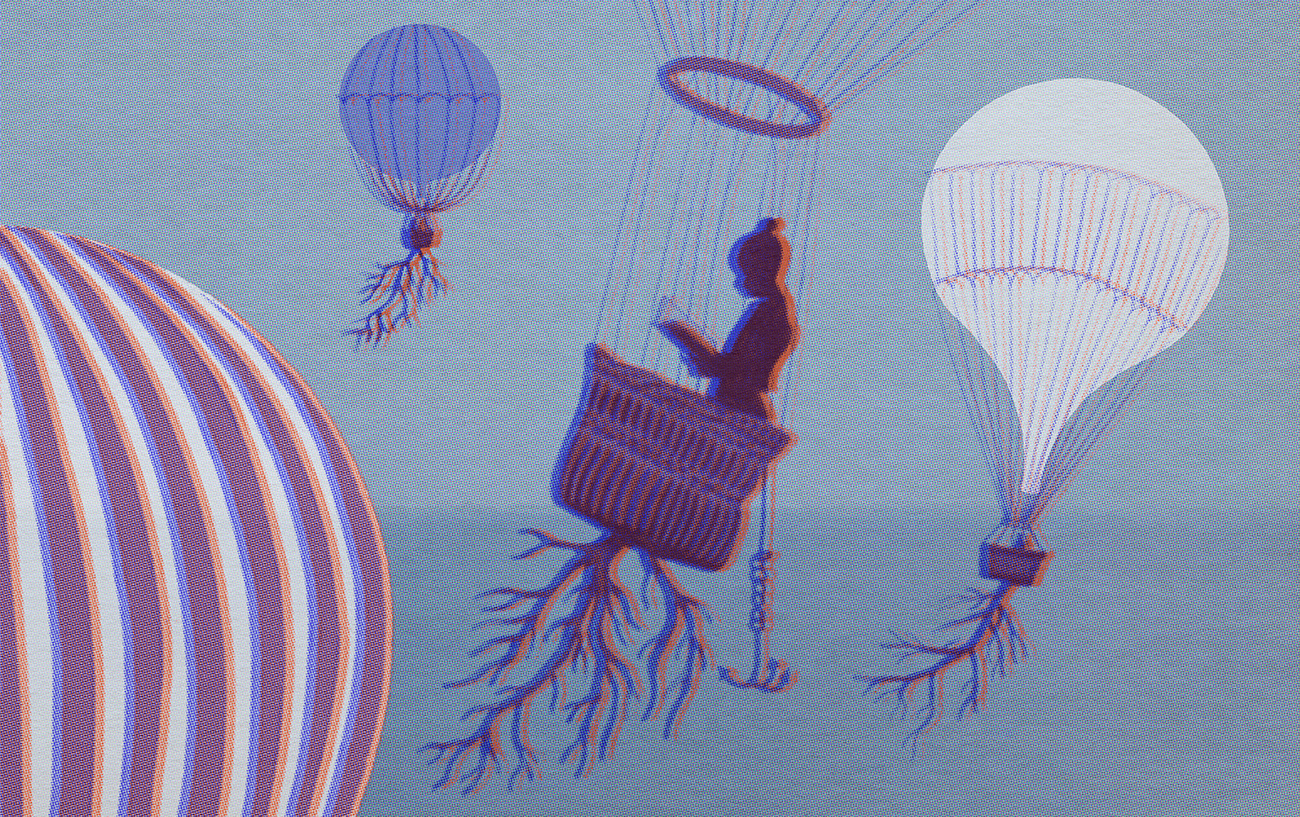
Unrooted Kids: The Difficult Path Towards Awareness
By Irina Poleshchuk | Image Pauliina Mäkelä
The long duration of the COVID-19 pandemic has gradually deprived us of community and sociality, from being together with our family and friends. The new pandemic generation has been formed in a very short time, bringing new values and new meanings of how to live and how to educate ourselves. Before the pandemic struck, we held the assumption that our humanity and our sense of communality have resided in time and space, forming a sort of social web or a world tree that enroots our individual understanding of who we are and what motivates our lives. In The Need for Roots: Prelude to a Declaration of Duties Towards Mankind, Simone Weil writes, “To be rooted is perhaps the most important and least recognized need of the human soul”.¹ To be rooted means to participate in a social event, to be linked to each other in a community and to a community as a whole. It is the natural and active participation in the social environment, which gives one a feeling of one’s self. It is an existential feeling of belonging and of being integrated to as well as integral to a more fundamental field of being, to the nature, and to the universe, when one has chances to merge with others and to feel others’ lives, to be in a flow of generations.
Being rooted creates particular relationships between our microcosm and macrocosm, picturing a mystical feeling of togetherness. In The Human Condition, Hanna Arendt notes that every person is at once the “who” and the “what”. The subject is actively taking part in the making or unmaking of one’s own world, constantly creating new meaning. The subject, however, is also affected by others, by different circumstances and situations. It suffers, it senses and it is contemplative.² This dynamic vibration between active agency and being acted upon is strongly sensed in each intersubjective relation. Our encounters with others engage different actions, including balance and harmony, but also negotiation, reconciliation, mediation, and confidence.
What does this sociality mean nowadays for children? What new thoughts are children having during the pandemic? In “‘A Year Full of Emotions.’ What Kids Learned from the Covid-19 Pandemic,” Shanaya Pokharna, 12, from Memphis, says that “2020 has matured me by a few years. I learned the virtues of compassion, hard work, selflessness, dedication, gratefulness, and passion towards one’s profession and family from my parents and people around me…This whole experience has made me realize that we humans are capable of overcoming any adversities…³ Arendt makes an important point by saying that our public realm has two main characteristics. One, it takes each individual experience and the creation of meanings and values as recognizable in the eyes of the others. Two, is also an intersubjective shared space where meanings are conveyed to our emotions and senses, creating a safe environment of belonging. However, the high awareness of children like Shanaya and new values she speaks about are still socially unrooted and not incorporated into “the communal tree of life,” as Arendt has put it.
‘‘All these interviews suggest that many children are locked in a sort of grey zone of existence: they are subjects-in-between, active agents whose acts receive no engaged responses.’’
Mira McInnes, 12, from Leawood, Kansas: “I needed to find a way to take my mind off things. So, I turned to writing. Over the past year, I’ve spent several hours most days writing short stories, poems, and songs about how I’m feeling and what my hopes for the future are”.⁴ My first feeling is that kids have been deprived of the public realm. They act but they are not acted upon, and they lack a dynamic response from their social surroundings. Abby Rogers, 11, of Lahaina, Hawaii, explains another interesting experience: “My new best friends are explorers who educate me on climate change, kelp forests, cotton-top tamarins and more. The more I’ve learned the more I wanted to do something to help make the world better”.⁵ To whom are these acts, full of awareness, addressed? Who is the percipient? Probably one of the important points missing here is a social mediator. It is the social mediator which creates a membrane of interaction, enrooting us in community and making us socially visible. Isaiah Magala Destin, 10, from Charlotte, North Carolina: “The COVID pandemic has made me feel a lot of ways – good, sad, weird, but mostly sad. I have not seen my old friends in person.…I feel sad that I don’t meet my family in Uganda and Florida”.⁶
All these interviews suggest that many children are locked in a sort of grey zone of existence: they are subjects-in-between, active agents whose acts receive no engaged responses. To be rooted means not only belonging but, in many situations, it means social becoming. The lack of a public realm might raise the awareness of these children, but the price is high: there are also strong feelings of sadness, depression, isolation, and loneliness.
¹ Weil 1952, 41.
² Arendt 1958.
³ Time, June 28, 84.
⁴ Time, June 28, 85.
⁵ Time, June 28, 85.
⁶ Time, June 28, 84.
Bibliography
Arendt, Hanna. The Human Condition. Chicago: Chicago University Press, 1958.
Weil, Simone. The Need for Roots: Prelude to a Declaration of Duties Towards Mankind. New York: Routledge and Kegan Paul, 1952.
“A Year Full of Emotions. What Kids Learned from the Covid-19 Pandemic,” Time, June 28, 2021.


Gale Arment
Good web site you have here.. It’s difficult to find excellent writing like yours nowadays. I seriously appreciate individuals like you! Take care!!